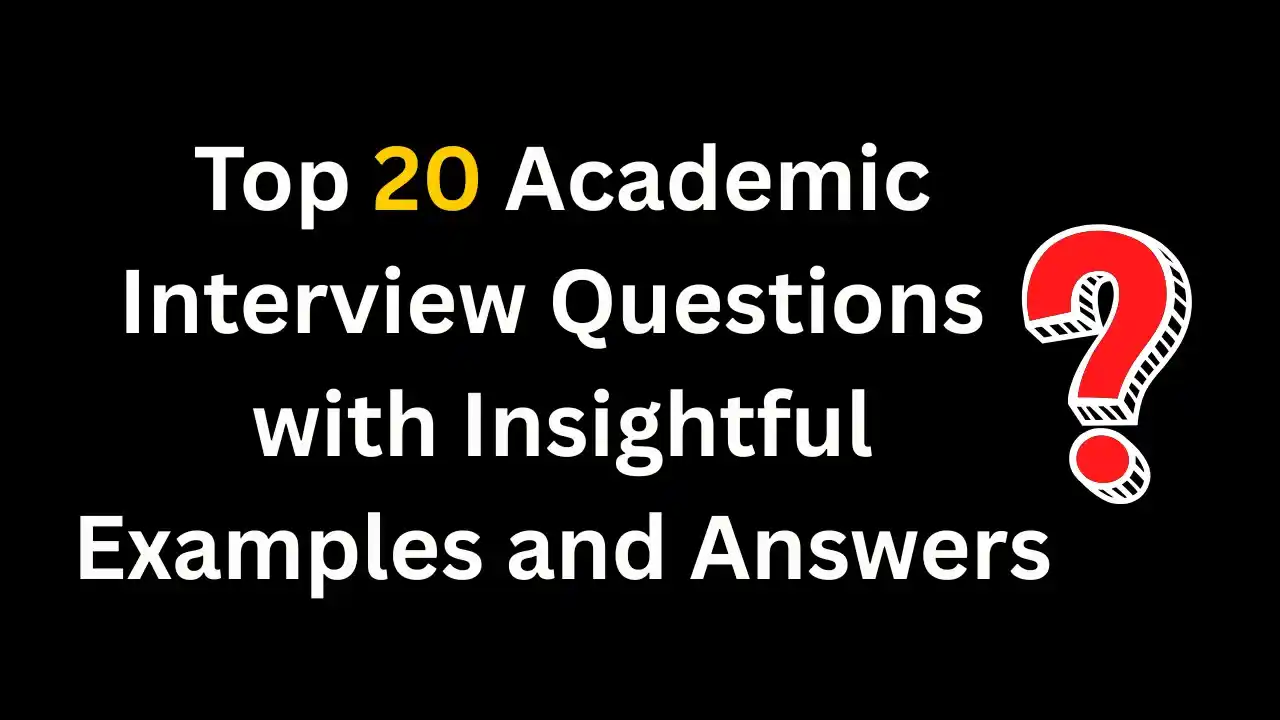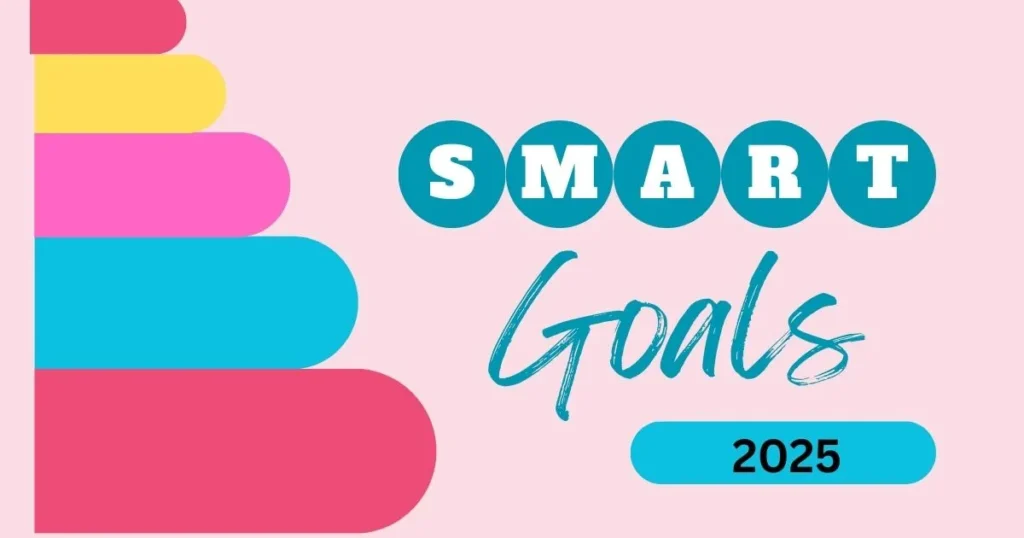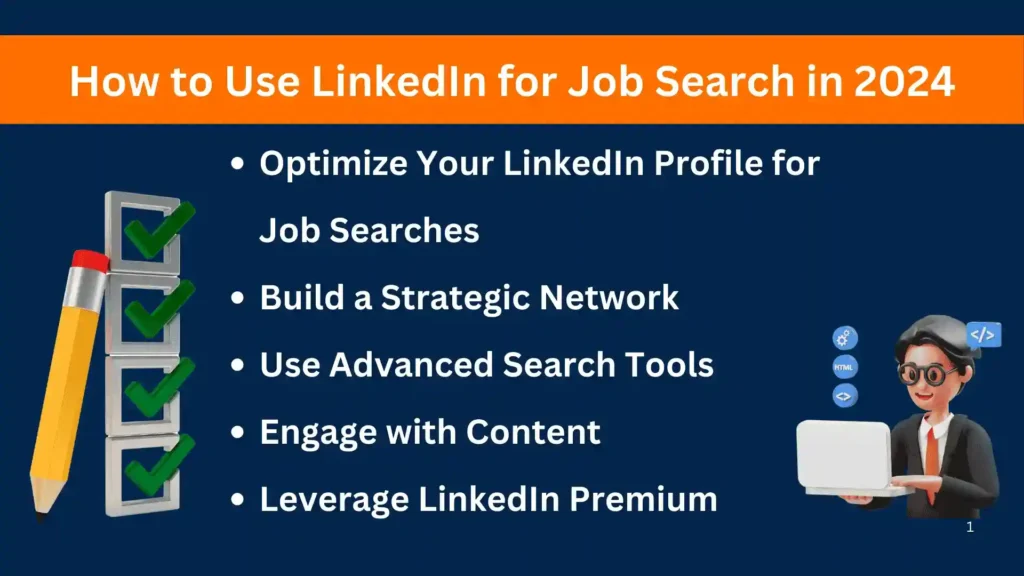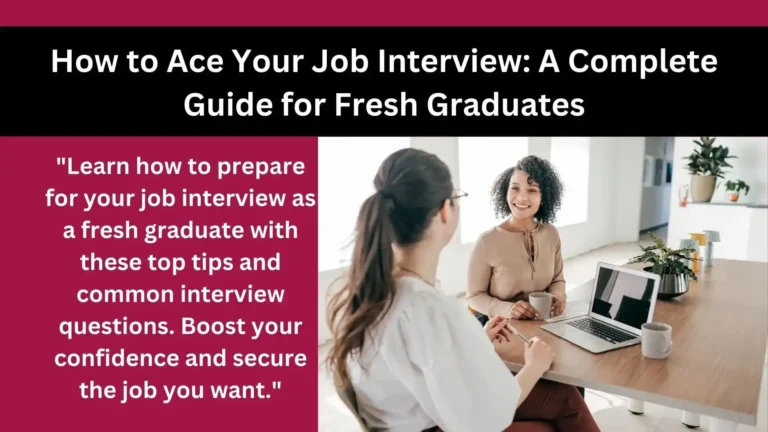Academic interviews can be a challenging experience, especially if you’re entering your first teaching or research role. One of the most important factors in standing out during the interview is knowing how to answer key academic interview questions effectively. These questions often focus on your teaching philosophy, student engagement strategies, and your ability to foster inclusive pedagogy. Being prepared for such questions not only boosts your confidence but also helps you highlight your academic teaching skills in a way that resonates with interviewers.
In this guide, we’ll walk you through 20 essential academic interview questions with answers you’re likely to face during your academic interviews. We’ll provide extended explanations, practical examples that will help you craft the perfect responses. Whether you’re discussing your approach to student performance assessment or your experience with hybrid teaching, this guide ensures you’re ready to impress. By leveraging the right keywords and demonstrating your teaching effectiveness, you’ll be able to answer academic interview questions with ease and success.
Read also below post:
Table of Contents
Part 1: Dissertation and Research Insights
This is the first and most important part of the interview. It sets the tone for the entire conversation and gives you a valuable opportunity to make a strong first impression. It’s also your chance to build rapport, demonstrate confidence, and understand the mindset of the interview panel. By observing body language and picking up on the structure of their questions, you’ll be able to anticipate their direction, align with their thought process, and guide the conversation more effectively.
“I hope these academic interview questions with answers will broaden your perspective, help fill in knowledge gaps, and open up new ways of thinking. May they serve as useful tools and open doors of opportunity during your job search journey.
1. Tell us about your dissertation
This is your chance to shine. Focus on your research question, methodology, findings, and relevance.
Example Response: “My dissertation, titled ‘The Sociocultural Impact of Digital Literacy in Rural Communities,’ explored how digital tools shape education access in underprivileged regions. I conducted qualitative interviews across five districts, analyzed behavior patterns, and proposed a hybrid education model.”
Before Examples:
- I struggled with narrowing my research scope.
- I had difficulty gathering consistent data from participants.
- Articulating my findings in the early stages was unclear.
After Examples:
- I successfully implemented a mixed-methods research approach.
- My work was presented at the National Education and Technology Conference.
- The model proposed in my study was piloted in two community centers.
2. How does your research relate or compare to what has been written already? How did you contribute to the field?
Interviewers want to see that you know the existing literature and have made a valuable addition.
Example Response: “Previous studies on rural digital education have primarily focused on access. My work contributed by studying engagement, introducing a behavioral lens to understand the long-term use of digital tools. I built on John Dewey’s education theory while integrating Bandura’s Social Learning Theory.”
Before Examples:
- Most research lacked ethnographic insights.
- Prior models overlooked non-institutional learning settings.
- Few explored mobile-first learning.
After Examples:
- I introduced the concept of ‘Digital Peer Mentoring’ in informal communities.
- My findings are now cited in two peer-reviewed journals.
- I’ve presented this work internationally, showcasing its relevance.
3. What has been the most difficult challenge you have faced?
Be honest and reflective. This question examines your problem-solving and resilience.
Example Response: “The hardest part was maintaining participant engagement over a six-month period. I overcame it by introducing community-led digital workshops, which increased trust and ongoing participation.”
Before Examples:
- Limited internet access in remote study locations.
- Loss of interview data due to a system crash.
- Balancing dissertation work with teaching responsibilities.
After Examples:
- I developed a secure backup protocol.
- I created alternative paper-based surveys.
- I streamlined my schedule using digital time-blocking.
4. If you were going to begin again, what changes would you make in your dissertation?
This shows your ability to self-evaluate and grow.
Example Response: “I would allocate more time for data validation. While my research was strong qualitatively, a stronger quantitative element would have enhanced credibility. I’d also invest earlier in a transcription software to save time.”
Before Examples:
- I underestimated the need for a pilot study.
- My initial sampling method was too broad.
- I lacked an interdisciplinary review at the outset.
After Examples:
- I learned the value of iterative research design.
- Now, I collaborate with statisticians early in research planning.
- I use project management tools like Trello for tracking milestones.
Part 2: Research Vision and Publications
My research vision is centered on enhancing educational methodologies through innovative technologies and data-driven strategies. I aim to contribute to the academic community by publishing insightful studies that bridge the gap between theory and practice. My work emphasizes the integration of academic teaching skills into research, ensuring practical relevance and pedagogical value. Through continuous learning and collaboration, I strive to produce impactful publications that support educators in refining their teaching approaches and improving student learning outcomes.
Do you like this answer? I am waiting for your feedback into comments. Anyway here is a strong plan for you to answer the questions when you are ready to test your academic teaching skills.
5. What are your future research plans? What resources do you need to conduct that research?
Your answer should align with the department’s interests while being original.
Example Response: “I plan to expand my research into urban-rural digital education bridges. I aim to use AI-driven learning assessments to analyze engagement. I’d need a data collection team, access to learning management systems, and institutional collaboration with rural schools.”
Before Examples:
- My plans lacked direction post-dissertation.
- I hadn’t considered interdisciplinary expansion.
- I overlooked grant application timing.
After Examples:
- I mapped my five-year research trajectory.
- I’ve already applied for a national-level grant.
- I’m forming a consortium with three education researchers.
6. What is your most important publication? Do you have plans for others? Why don’t you have any publications?
If you have no publications, focus on what’s underway. If you do, showcase the impact.
Example Response: “My top publication is ‘Digital Engagement in Remote Learning Environments,’ published in the Journal of Educational Innovation. It’s been cited 30+ times and used in faculty training workshops. I’m working on two co-authored papers — one on mobile learning, another on AI in education.”
Before Examples:
- I focused more on fieldwork than publication.
- I struggled to find suitable journals.
- I lacked mentorship in academic publishing.
After Examples:
- I took a publishing course to refine my writing.
- I established a writing group with other PhD candidates.
- I now prioritize one major publication per semester.
Part 3: Teaching Philosophy & Practice
My teaching philosophy is rooted in creating a student-centered, inclusive, and engaging learning environment. I believe effective education goes beyond content delivery—it involves inspiring curiosity and critical thinking. By applying strong academic teaching skills such as lesson planning, assessment design, and clear communication, I ensure that learning objectives are met while catering to diverse student needs.
I regularly reflect on my teaching practices and adapt based on feedback to enhance student outcomes. These academic teaching skills not only support my classroom effectiveness but also foster a culture of continuous learning, preparing students for both academic and real-world success.
I hope this insight into teaching philosophy and the use of academic teaching skills will inspire you to reflect on your own approach to education. By understanding the core values behind effective teaching, you can present yourself with clarity and confidence during interviews. Let this guidance support your preparation, strengthen your answers, and open new paths for growth and opportunity as you navigate your journey in academia and beyond.
7. What makes you a good teacher?
Your teaching ability is often just as important as your research credentials.
Example Response: “I prioritize clarity, accessibility, and engagement. My background in digital education allows me to bring in interactive tools like Padlet and Kahoot. I also hold regular reflection sessions where students co-evaluate course progress.”
Before Examples:
- I relied too heavily on lectures early on.
- I found it difficult to gauge student understanding.
- Managing large classes felt overwhelming.
After Examples:
- I now use student feedback forms to adjust my teaching in real-time.
- I’ve diversified my teaching methods to include flipped classrooms.
- Students rate my sessions highly on both engagement and clarity.
Part 4: Student Engagement and Inclusive Pedagogy
Student engagement and inclusive pedagogy are at the heart of effective teaching and learning. I strive to create an environment where every student feels valued, heard, and motivated to participate actively. By incorporating diverse teaching strategies and culturally responsive practices, I ensure that different learning styles and backgrounds are respected.
A key component of this approach is student performance assessment, which allows me to evaluate learning outcomes fairly and adapt instruction accordingly. Through continuous feedback and varied assessment methods, I can support each student’s progress, promote equity in learning, and foster a deeper connection between students and the course content.
I hope this perspective on student engagement and inclusive pedagogy highlights the importance of creating supportive and dynamic learning environments. By understanding how student performance assessment plays a vital role in measuring progress and adapting teaching strategies, you’ll be better equipped to address interview questions with clarity and purpose.
Let this insight empower you to showcase your commitment to equity and student success, opening the door to meaningful opportunities in your academic career journey
8. How do you engage students in large or online classes?
This shows your adaptability and creativity in different teaching contexts.
Example Response: “I integrate breakout rooms for discussions, use polling tools like Mentimeter, and offer optional weekly Q&A sessions. These foster real-time interaction and help students feel seen in larger or remote settings.”
Before Examples:
- Students were hesitant to participate online.
- Group activities felt disorganized.
- It was hard to track individual engagement.
After Examples:
- I now assign clear roles in breakout groups.
- I use digital dashboards to monitor participation.
- I rotate leadership among students to promote involvement.
9. How do you ensure inclusivity and accessibility in your teaching?
Highlight practices that accommodate diverse learners.
Example Response: “I design materials with accessibility in mind—using alt text, clear fonts, and captioned videos. I also offer content in multiple formats (audio, video, text) and schedule office hours across time zones to support varied needs.”
Before Examples:
- I relied on visual-heavy content without alternatives.
- Students with disabilities reported challenges.
- I didn’t know how to use accessibility tools.
After Examples:
- I completed an online course on inclusive design.
- I implemented Universal Design for Learning (UDL) principles.
- Students now report improved access and satisfaction.
10. Describe your experience with online or hybrid teaching
This question is increasingly common post-pandemic. Focus on your adaptability, tech tools, and student outcomes.
Example Response: “I’ve taught hybrid courses using Moodle and Zoom, integrating breakout rooms, digital whiteboards, and asynchronous discussion threads. For a media literacy course, I used project-based learning via Google Workspace and Padlet to maintain engagement and accountability.”
Before Examples:
- My early online sessions lacked interactivity.
- I struggled with student attention spans on Zoom.
- Assessment integrity was difficult to manage remotely.
After Examples:
- I use low-stakes formative quizzes to keep students involved.
- I record lessons with captions for accessibility.
- Student evaluations show improved satisfaction with hybrid formats.
11. How do you assess student performance?
This question assesses your understanding of evaluation beyond grades.
Example Response: “I use a mix of formative and summative assessments. Weekly reflections, peer feedback, and open-book quizzes help gauge learning in real-time. For summative work, I use rubrics aligned with learning outcomes to ensure transparency.”
Before Examples:
- I used to rely solely on midterms and finals.
- Students were unclear about grading criteria.
- Feedback was delayed or generic.
After Examples:
- I now provide clear rubrics before each assignment.
- I use tools like Turnitin and Google Classroom to streamline grading.
- Students appreciate timely, specific feedback for improvement.
12. How do you handle academic misconduct or plagiarism?
This gauges your ethics, policies, and handling of difficult situations.
Example Response: “I emphasize academic integrity from day one. I hold a session on citation practices and use plagiarism detection software. If misconduct occurs, I address it privately, giving students a chance to explain before following institutional protocol.”
Before Examples:
- I didn’t clarify plagiarism policies early enough.
- I had inconsistent responses to different cases.
- Some students were unaware of citation standards.
After Examples:
- I now include a dedicated session on academic ethics.
- I use scaffolded assignments to teach proper citation.
- I’ve helped students correct early mistakes without punitive action.
13. Describe your experience with curriculum development.
This shows your ability to create or improve academic programs.
Example Response: “I redesigned a digital literacy module to include mobile learning and gamification. I also aligned the syllabus with Bloom’s Taxonomy and included student feedback loops. This increased student satisfaction and performance.”
Before Examples:
- I taught from outdated syllabi.
- I lacked experience in creating new modules.
- Course objectives weren’t clearly linked to assessments.
After Examples:
- I led a curriculum review team for the department.
- I implemented backward design principles.
- My revised courses are now part of the core curriculum.
14. How do you balance research, teaching, and service?
This question evaluates time management and multitasking skills.
Example Response: “I block time weekly for research, class prep, and committee work. I use project management tools to stay on track and set clear boundaries. Cross-tasking — like involving students in research — helps integrate these areas.”
Before Examples:
- I overcommitted to service roles.
- Research often took a backseat.
- Teaching prep consumed my evenings.
After Examples:
- I now delegate tasks within committees.
- I mentor students through research assistant roles.
- I set quarterly goals for each area and track progress.
15. What role do you see yourself playing in departmental service?
Show your willingness to contribute beyond teaching and research.
Example Response: “I enjoy collaborative planning and have served on the teaching effectiveness committee. I also organized a student mentorship program and am interested in supporting diversity and outreach initiatives.”
Before Examples:
- I wasn’t involved in departmental activities initially.
- I missed opportunities to mentor new students.
- I didn’t understand committee functions.
After Examples:
- I now volunteer for curriculum reviews.
- I co-host departmental workshops on digital pedagogy.
- I help onboard new adjuncts and teaching assistants.
Part 5: Research, Collaboration, and Professional Development
16. How do you approach research and scholarship in your field?
This question explores your research methodologies and contributions to your academic discipline.
Example Response: “My research is deeply informed by both theoretical frameworks and practical applications. I prioritize interdisciplinary approaches, ensuring my work contributes to current trends while also addressing gaps in the literature. I also actively seek opportunities to collaborate with colleagues and students on research projects.”
Before Examples:
- I was focused mainly on solo research projects.
- I didn’t always apply my research findings to teaching practices.
- I struggled to balance research with other responsibilities.
After Examples:
- I regularly collaborate with colleagues in and outside my field.
- I incorporate research findings into course materials to enrich student learning.
- I’ve been able to align my research with departmental goals, making it more impactful.
17. How do you incorporate your research into your teaching?
This question assesses the connection between your research and teaching practices.
Example Response: “I integrate my research into the classroom by designing assignments that draw on my ongoing projects. For example, in my course on digital literacy, I used my own research on social media’s influence on public opinion to foster critical discussions and assignments about the role of media in society.”
Before Examples:
- My research sometimes felt disconnected from my teaching.
- I wasn’t sure how to weave research into the curriculum effectively.
- I focused mainly on textbooks and general resources.
After Examples:
- I now include up-to-date examples from my research in every course.
- Students appreciate seeing how theory translates into practice.
- I regularly discuss my findings and methodologies to give students insights into the research process.
18. Describe your experience with interdisciplinary collaboration.
This question evaluates your ability to work across academic fields and contribute to collective projects.
Example Response: “I’ve worked with faculty from multiple departments to develop cross-curricular projects that promote student learning in diverse fields. For instance, I collaborated with the psychology department to create a course combining behavioral theory with digital technology applications.”
Before Examples:
- I usually worked within my own discipline.
- Collaboration felt challenging with colleagues from other fields.
- I didn’t always see the benefits of interdisciplinary projects.
After Examples:
- I now participate in regular interdisciplinary research forums.
- My collaborative courses have received positive feedback from both students and faculty.
- I’ve learned to appreciate different perspectives and incorporate them into my teaching.
19. How do you continue your professional development as an educator?
This question highlights your commitment to lifelong learning and growth in your teaching practice.
Example Response: “I regularly attend workshops on emerging pedagogical techniques, such as flipped classrooms and gamification. I also subscribe to educational journals and take online courses to stay up-to-date on the latest research in teaching and learning. I value feedback from colleagues and students, which helps me continuously improve my methods.”
Before Examples:
- I focused primarily on my core responsibilities and neglected professional development.
- I didn’t actively seek feedback on my teaching practices.
- I had limited exposure to new teaching tools and techniques.
After Examples:
- I now attend at least two professional development events per semester.
- I’ve implemented several new strategies based on peer feedback and research.
- My students benefit from the updated methods I bring into the classroom.
20. How do you balance teaching, research, and administrative duties?
This question gauges your ability to manage competing responsibilities effectively.
Example Response: “I use time-blocking techniques to ensure I allocate sufficient time for teaching, research, and service duties. I prioritize tasks based on deadlines and long-term goals, and I am proactive about delegating administrative work when possible. I’ve found that effective communication and organization are key to maintaining balance.”
Before Examples:
- I often felt overwhelmed by balancing multiple responsibilities.
- Teaching preparation took up most of my time.
- Administrative duties sometimes detracted from my research focus.
After Examples:
- I now set weekly goals to balance my tasks.
- I have built stronger workflows that allow me to stay on track with all responsibilities.
- My students and colleagues have noticed an improvement in my efficiency and availability.
FAQs on Academic Interview Questions
What are some effective strategies for improving student engagement in large classes?
In large classes, interactive tools like polling, breakout rooms, and discussion forums can significantly enhance student engagement. By using platforms like Mentimeter or Zoom for virtual interactions, you can create a more dynamic and participatory learning environment.
How can I make my teaching more inclusive and accessible?
Designing accessible content is essential for inclusivity. This includes using clear fonts, alt text for images, and captioned videos. Additionally, offering materials in multiple formats (audio, text, video) ensures diverse learners can engage with the content effectively.
What tools can help improve student participation in online learning environments?
In online learning, tools like Kahoot, Padlet, and Zoom’s breakout rooms foster engagement. Regular Q&A sessions, polls, and real-time collaboration tools like Google Docs also help maintain student participation and interaction in virtual settings.
How do I assess student performance effectively?
Using a combination of formative and summative assessments can provide a holistic view of student progress. Tools like Google Classroom and Turnitin streamline grading and feedback, ensuring that students receive timely, clear, and actionable evaluations aligned with learning outcomes.
What is the role of academic integrity in teaching?
Academic integrity is essential for fostering a culture of honesty and accountability. Emphasize citation practices early, use plagiarism detection software, and provide guidance on ethical research to ensure students understand the importance of original work and proper referencing.
How can I enhance my curriculum development skills?
Improving curriculum development involves aligning course objectives with assessments, using backward design, and incorporating student feedback. Tools like Bloom’s Taxonomy help structure lessons effectively, and incorporating mobile learning and gamification can keep students engaged while achieving educational goals.
How do I balance teaching, research, and service responsibilities?
Time management tools like project management apps can help balance teaching, research, and service duties. By setting clear weekly goals and delegating tasks, faculty can effectively manage their workload while maintaining a high standard in each area of responsibility.
What methods work best for online teaching and hybrid courses?
Hybrid courses thrive with tools like Zoom for live interactions and Moodle for resource sharing. Incorporating asynchronous discussion threads, formative quizzes, and project-based learning helps keep students engaged. This blend ensures flexibility while promoting active learning.
How do I handle academic misconduct in my classroom?
Address academic misconduct by setting clear expectations from the start. Use plagiarism detection tools and educate students on citation standards. If issues arise, handle them privately, allowing students to explain before following institutional protocols to maintain fairness.
How can I foster a positive learning environment for all students?
Fostering a positive learning environment involves creating a supportive atmosphere through inclusive practices, active feedback, and open communication. By recognizing diverse learning needs and being responsive to feedback, educators can build an environment that encourages student success and well-being.
Final Conclusion
In conclusion, my teaching philosophy emphasizes academic teaching skills, student engagement, and inclusivity, ensuring that all learners can thrive. By incorporating inclusive teaching practices and student engagement strategies, I create an environment where students feel valued and supported. I continuously adapt my approach to promote teaching effectiveness and facilitate classroom engagement, incorporating a variety of methods and tools. Balancing research-teaching commitments and departmental service is crucial to my approach, allowing me to contribute meaningfully to the academic community. Overall, my focus on fostering an accessible, dynamic classroom supports student performance assessment and enhances learning outcomes.
I invite you to share your thoughts or questions, as your feedback plays a vital role in continuously improving the teaching and learning experience.




















